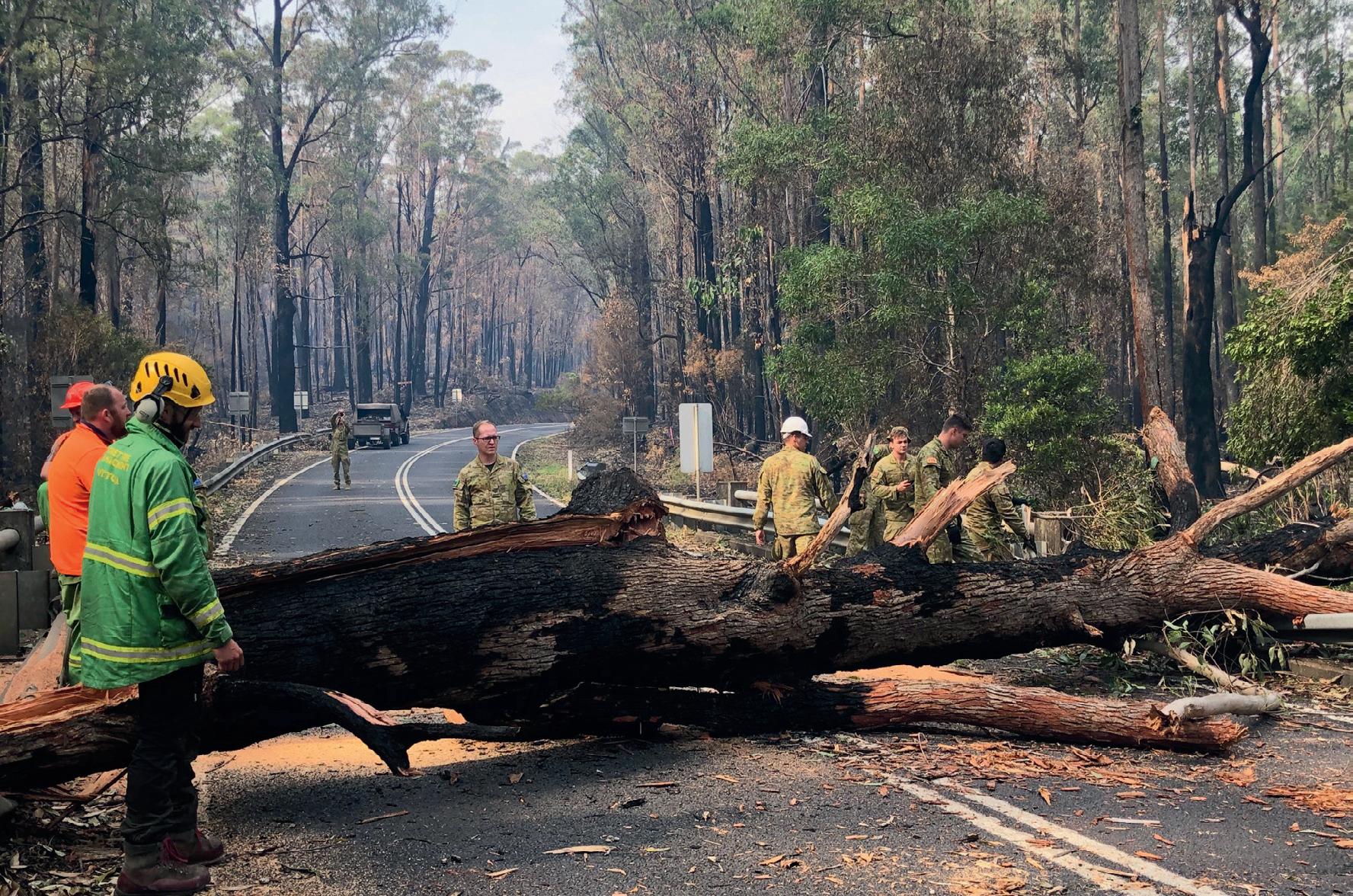
3 minute read
Planning for Australia’s connectivity during natural disasters
PLANNING FOR AUSTRALIA’S CONNECTIVITY DURING NATURAL DISASTERS Gavin Wilson*
Natural disasters are an inherent part of Australia’s landscape, woven into our very culture. The threat is ever-present, although we cannot predict where or how hard they will strike. Sadly, what is certain is their continued presence in our future.
Natural disasters risk leaving vulnerable and remote communities unable to access vital information. The Royal Commission into the bushfires is an important first step towards factoring failsafe options into planning for future connectivity.
Vulnerable communities during the 2019–20 summer bushfires struggled from lack of connectivity in three main areas. Compromised mobile tower coverage meant people were unable to communicate during a very stressful time. Local authorities were hampered in communicating critical updates, which saw many affected towns having to resort to using whiteboards or loudspeakers as ‘public square’ advisories. Businesses were also affected by network and power outages, leaving them unable to sell vital goods such as fuel and food.
Alternative communication technologies In previous decades, these challenges were simply par for the course, as the technology did not exist to provide alternative connectivity options. Today, mobile LTE networks Authorities must include network technology that can provide failover or fast pop-up options for connectivity during disasters.
can provide almost instant connectivity in place of physical wired internet lines that are damaged or non-existent.
Delivering rapid response during emergencies depends on the ability to quickly set up a reliable network connection to immediately begin coordinating response and recovery operations. These environments rarely have IT expertise available and are typically located in remote areas.
For example, Cradlepoint supported a coastal Victorian council during the evacuation of approximately 900 Mallacoota residents during the bushfires. Cradlepoint supplied routers for a pop-up processing centre established to account for displaced people from Mallacoota when they arrived into port at Hastings by two naval ships. This enabled authorities to account for and process evacuees efficiently and with empathy during the stressful crisis. Evacuees also had access to Wi-Fi, meaning they could let family and friends know they were safe. The routers were sent within hours of the request and required a few hours to set up prior to dispatch, as there were no IT personnel on the ground.
Communications for first responders Emergency services vehicles throughout Australia still rely on radio technologies to communicate with each other and back to base. However, there is an opportunity for emergency vehicles to upgrade to always-on, cloud-managed technologies with wireless networks.
In environments where every decision and every second counts, we have seen success in other geographies where these technologies are deployed. Anne Arundel County Fire Department, in the US, is using 4G LTE solutions to deliver always-on connectivity and GPS location data to save lives by deploying the right resources to fire emergencies. The technology was selected for its reliability in delivering accurate, real-time GPS information that would let operators dispatch the closest vehicle with the shortest response time for each emergency. It was important to have an all-in-one solution that would provide always-on WAN access and security of sensitive information. Additionally, they wanted a solution that could easily be deployed, monitored and managed remotely through a single pane of glass.
Looking forward, it’s imperative for Australian authorities to include network technology that can provide failover or fast pop-up options for connectivity that helps citizens stay in touch with loved ones, enables government and emergency agencies to provide timely information updates and enables essential businesses to continue to transact during disasters. *Gavin Wilson is Managing Director of Cradlepoint Asia Pacific.










